Easy Poke At-Home Guide
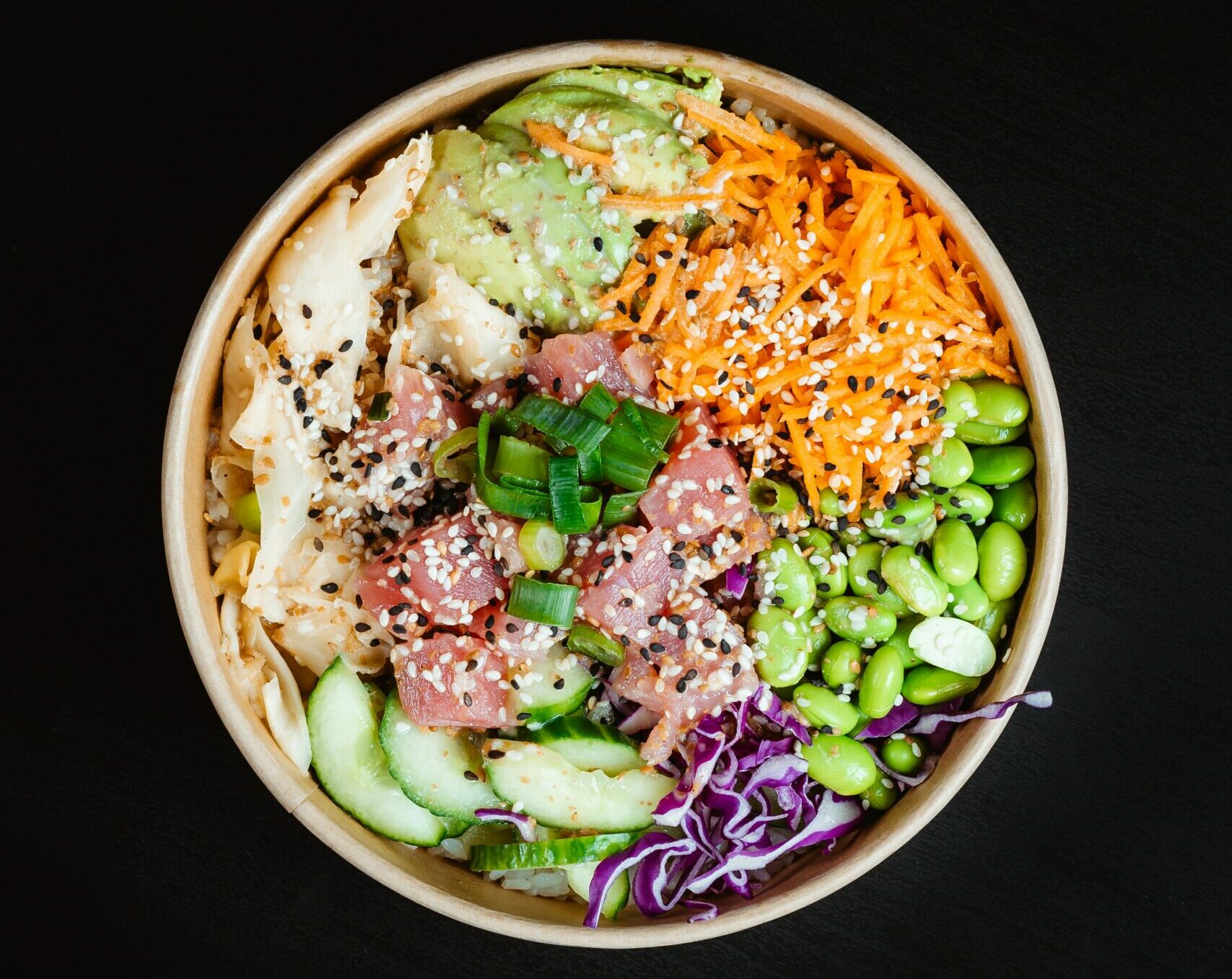
Enjoy this Hawaiian dish at home and find out how to make an easy poke bowl. There are tips to make the fish dish more affordable, meet dietary restrictions, and how to utilize products you already have at home. This guide is in no way 100% traditional, just my easy ways to make poke at home.
Poke is relatively simple if you think about it in these terms: a salad with fish, rice, sauce, and whatever toppings you’d like. Of course, certain toppings are simply a must.
You will not need everything listed here. This is a guide with options where you can pick and choose which items you’d like to include depending on what you have available.
Looking for similar inspiration? Check out this Vegan Bowl Guide: Simple & Healthy.
Go down your “restaurant” (aka home) options
Base
(choose 1-2)
- salad (romaine, spinach, spring mix, etc.)
- brown/white rice (sushi rice is best)
Protein
(choose 1-2)
- tuna (easy – from a can)
- raw sushi-grade
- salmon (or lox)
- tuna
- tofu
- tempeh
Toppings
(choose 1-all)
- ginger (pickled)
- avocado
- edamame (from frozen)
- mango & pineapple mix
- green onion
- seaweed
- cucumber
- carrots
- sesame seeds
Sauce
(choose 2+)
- tamari (or soy sauce, if not gluten free)
- coconut aminos
- sriracha
- rice vinegar (for rice too)
- juice from pickled ginger
- lime/lemon
- peanut sauce
- fish sauce (optional) warning: very salty
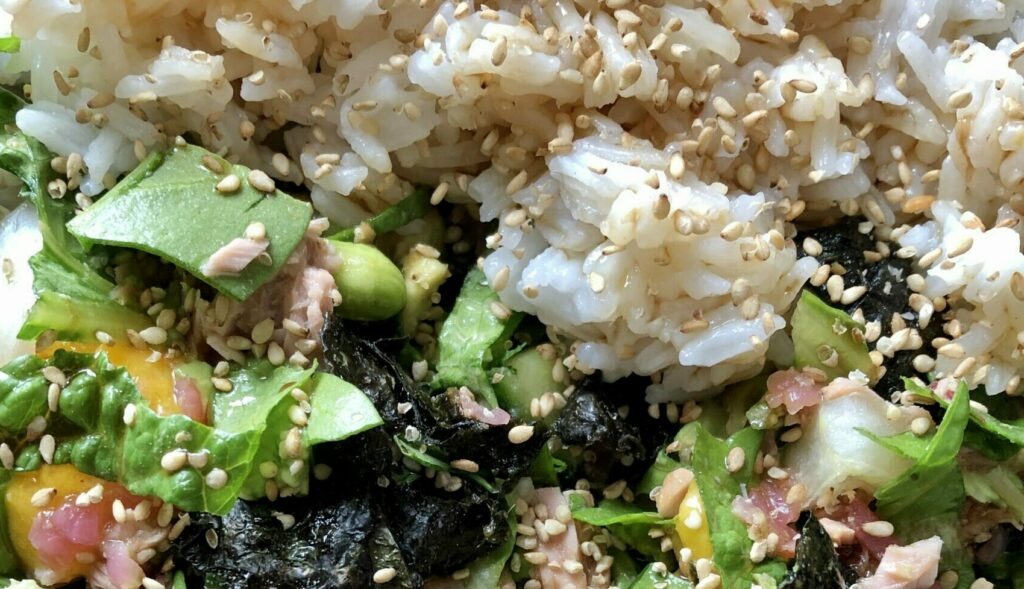
Recipe Tips
- Cooking rice: Something that can be easily forgotten, but makes a big difference is the temperature the rice is served at.
- Do you want freshly cooked rice? Only accounted for cooking rice right before? It’ll be warm.
- Are you more into cooled rice? Kind of like the pre-made bought sushi. Then plan to cook it beforehand and leaving it in the fridge, or use leftover rice (note, it won’t taste as fresh).
- Sushi-grade: Sushi-grade fish is not accessible everywhere. My go-to place to get them are Asian grocery stores nearby. But don’t fret if you can’t make that trip, canned fish can also be delicious. It is also the most affordable option, while not sacrificing having fish in your poke.
- Mixing sauces: Mixing sauces can be a critical part. Since this isn’t a typical recipe and is more of a guide, there is no one sauce. The idea is to be able to customize it to your liking. A good plan is to always include at least one salt and one acid.
- Here are categories to keep in mind when mixing sauces.
- Salt: tamari, soy sauce, coconut aminos, fish sauce
- Acid: rice vinegar, lime/lemon
- Heat: sriracha, ginger
- Sweet: coconut aminos, sriracha, pickled ginger juice
- Fat: peanut butter, oils
On the hunt for more easy recipes?
Ingredients in Detail (+ more tips)
Base
Sushi rice: The main difference between sushi rice and regular rice is simply the amount of starch. Sushi rice contains more starch and moisture, ultimately making it more sticky.
If you don’t want to take the extra step to get sushi rice though, don’t worry since this isn’t actually sushi, and other rice is just as good. Once you mix it with rice vinegar you’ll get the ideal taste.

Proteins
Tuna: You’re more likely to have canned tuna on hand than sushi-grade tuna. While they are completely different, canned tuna is super convenient yet still delicious. It even blends much easier into the rest of the ingredients so your bowl will be very flavorful.
Salmon: Apart from sushi-grade and canned salmon, there is the option of lox. Maybe you buy lox for bagels, and even if not, most grocery stores carry it. It can be more pricey than canned salmon, but more accessible than sushi-grade. All you’ll have to do is cut it to your liking.
Tofu: The pro about tofu is it soaks up flavor like no other. If you want to plan ahead, marinating the tofu in a mixture of the sauces can make a favorable difference.
Tempeh: Tempeh is similar to tofu. It’s also made out of soy beans but is nuttier, harder, and slightly more bitter. It’s not common to put in poke bowls, but I wanted to add this option since it’s also delicious.
Check out this feature to learn more about tempeh.
Toppings
Pickled ginger: Most people don’t have this lying around, but pickled ginger specifically can be helpful for two parts of this recipe. The most obvious is having pickled ginger – like in normal poke shops of course.
The other benefit is utilizing the juice from the jar as part of your sauce. That way you have more ginger flavor and are making the most out of your purchase.
Fresh ginger or ginger powder would be the best alternatives if you want the flavor but don’t want to get pickled ginger.
Edamame: Frozen edamame is a staple in my household. Not only is it one of my must-have poke toppings but it is so versatile.
Edamame is a great plant-based protein option and it can be stored in the freezer for a while.
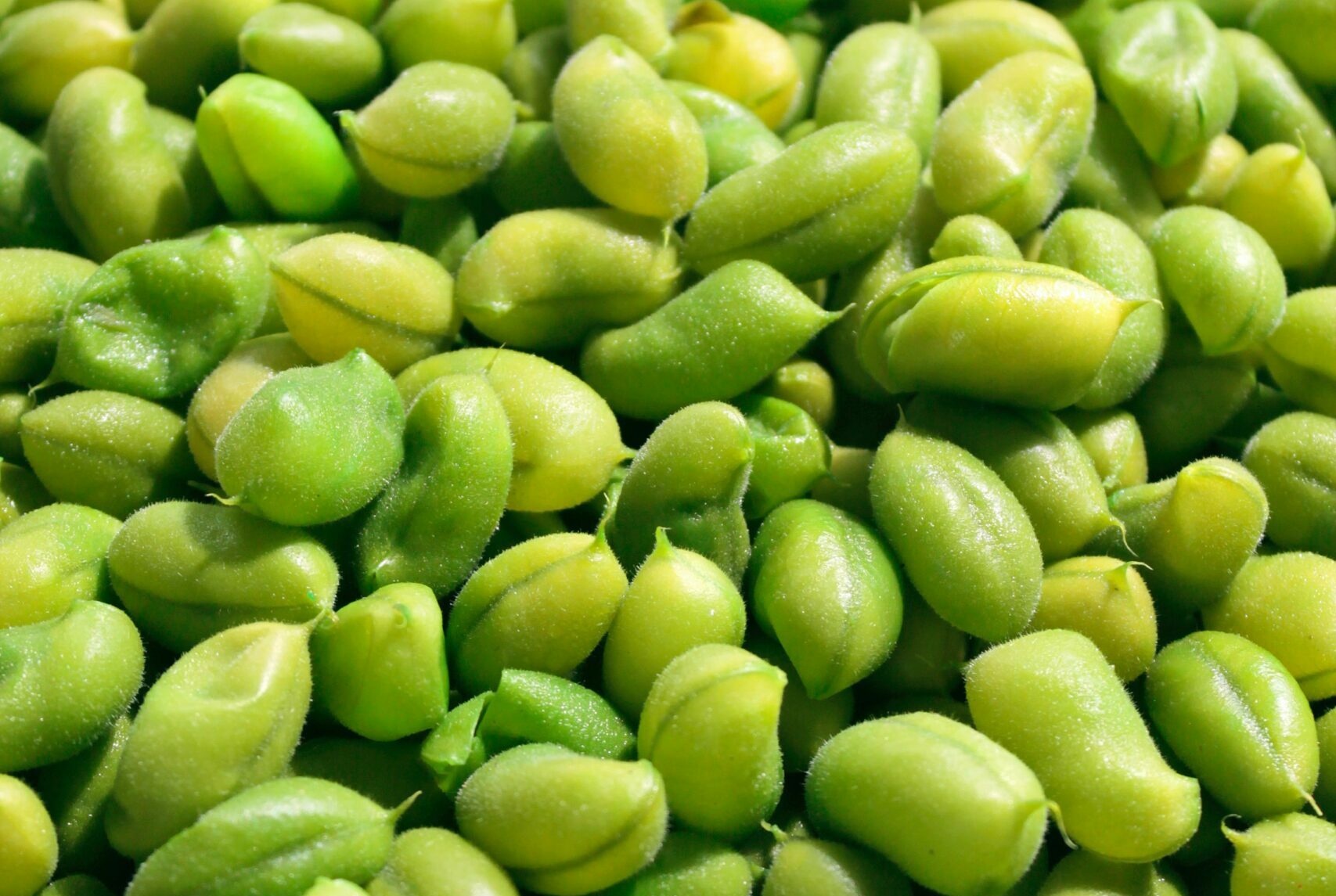
Mango & pineapple mix: By no means do you have to buy this pre-made.
If you want to make it easy (and cheaper) for you though, you could use frozen mango and pineapple. Then all you have to do is chop them into small cubes and mix. In fact, it may be easier to not defrost before cutting.
Sauces
Tamari: Tamari is essentially a gluten free alternative to soy sauce. You can totally use soy sauce if you don’t have tamari at home.
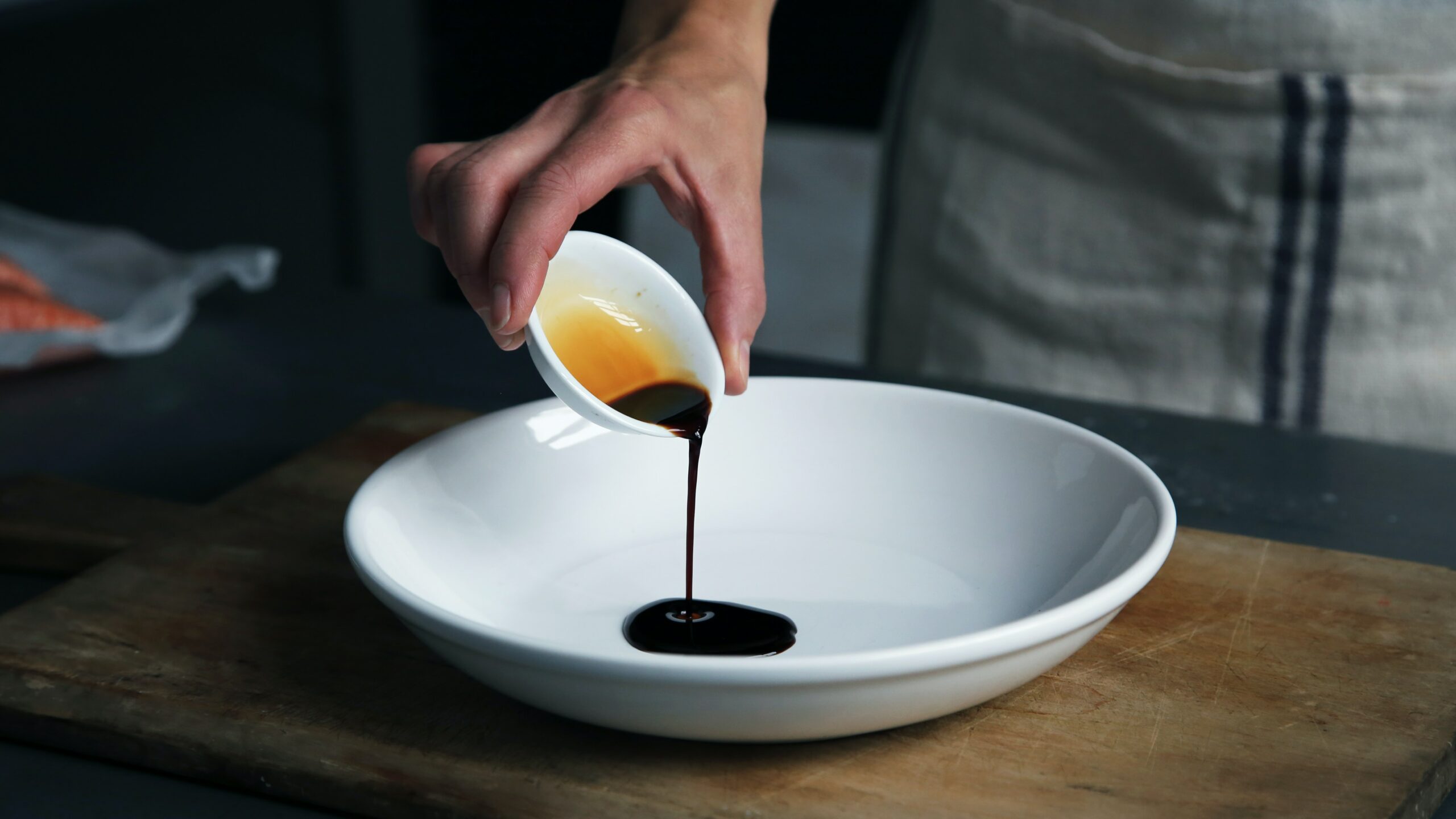
Coconut aminos: The best part of this sauce is apart from being a soy sauce alternative, it has a little bit of a sweet taste. Then you won’t need to add any other sweet flavors if that’s what you want.
Sriracha: This is best described as a mix of sweet and spicy. For a healthier version than the typical sriracha brand, try this Organic Sriracha Hot Sauce by Yellowbird.
Rice vinegar: This is such a necessity for the perfect-tasting rice. You can get rice vinegar at most grocery stores, and it’s a great addition to most Asian meals. It lasts for a long time in the pantry too.
Fish sauce: Be cautious using fish sauce as it is very salty. It’s definitely not a need but a flavorful (and salty) addition. Note, this is of course not vegan.
Poke Bowl
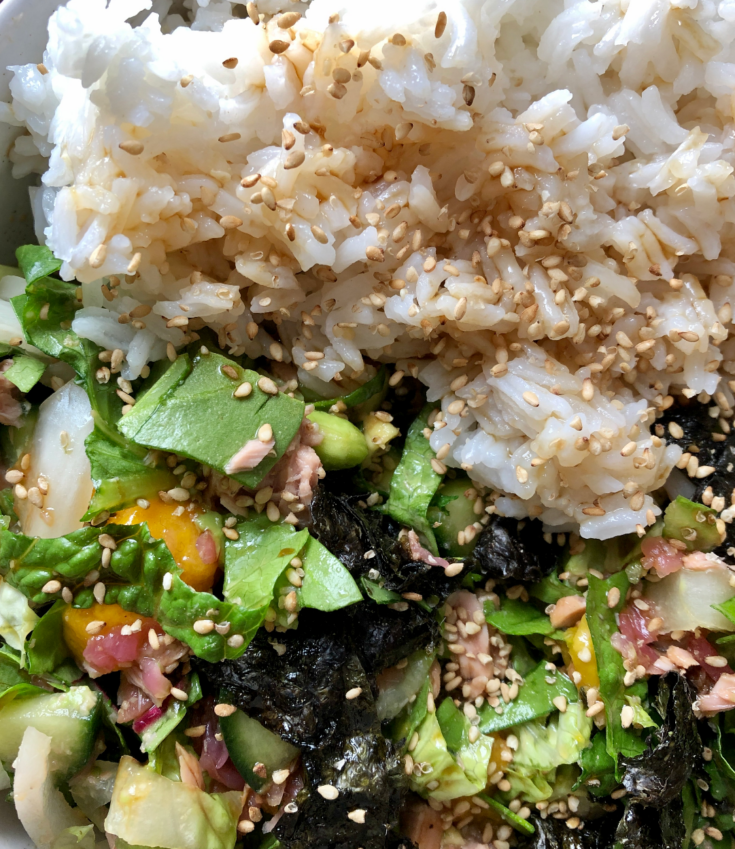
This is NOT a normal recipe. It is a guide to help make a customizable poke bowl at home. It provides ideas for the creation including meeting dietary restrictions and accessibility.
Ingredients
Base
- salad (romaine, spinach, etc.)
- sushi rice or white/brown rice
Protein
- tuna (easy – from a can)
- salmon* (or lox)
- tuna*
- tofu
- tempeh
Sauce
- tamari (or soy sauce)
- coconut aminos
- juice from pickled ginger
- sriracha
- rice vinegar
- lime/lemon
- fish sauce (optional) warning: very salty
Toppings
- ginger (pickeled)
- avocado, sliced
- edamame (from frozen)
- mango & pineapple mix
- green onion
- seaweed
- sesame seeds
- cucumber, sliced
- carrots, sliced
Instructions
1. Pick Base (1-2)
- cook rice
- mix rice with rice vinegar
- cut & wash salad
2. Choose Protein (1-2)
- mix protein with sauce(s) of choice
3. Assemble in a bowl
- place base on the bottom
- add protein
- top with desired topping(s)



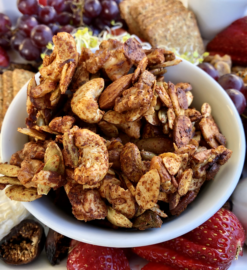
Leave a Reply